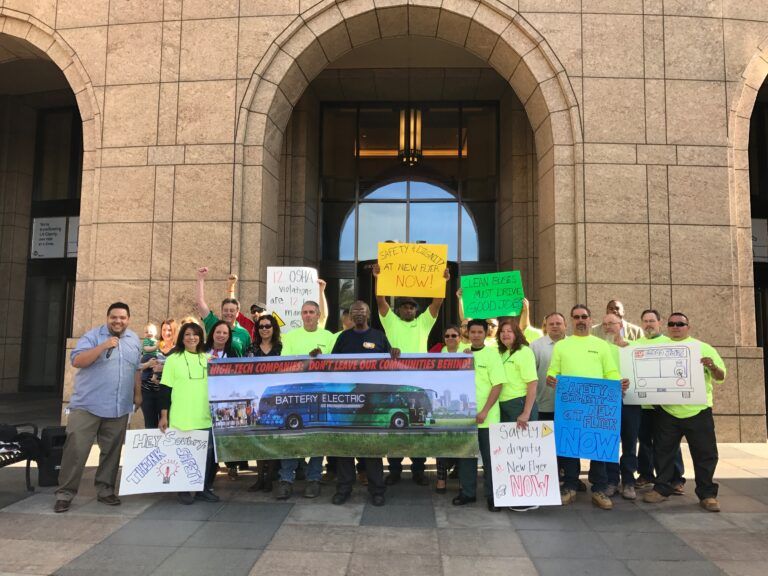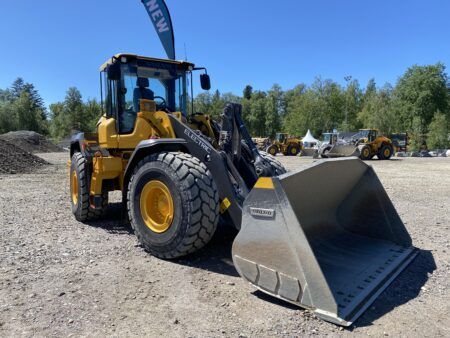The EV transition will not only revolutionize the automotive industry’s modes of production, there also be big changes for the human element too. Here we look at the different elements that go towards ensuring OEMs have a skilled and loyal workforce.
The EV Transition is a true shakeup for automotive industries across the world. As well as hitting sustainability goals, the more efficient manufacturing process increases productivity, the backbone of competitiveness as well as wage growth. It’s time of upheaval, especially in the US, where 2023 saw United Auto Workers (UAW) strikes over pay, while the recent Trump election victory will decide the future role of the US in the world economy. As that country mulls increasingly protectionist measures, China is penetrating global EV markets. So how will western OEMs fare in the struggle for the best production methods and retention of skilled employees? And what does all this mean for the worker?
Productivity
The EV Transition has moved from the sidelines to take center stage. Across America there are 38 ICE auto factories compared to 35 for EVs, and that number is rising steadily as ICE production is phased out. A simpler drivetrain, fewer moving parts, more automatization, more straightforward quality control all means the average EV takes just 3.7 labor-hours to produce, while the average ICE takes 6.2. Whichever way you cut it, the labor costs of EVs make up a smaller proportion of the overall labor costs of the product, at least when represented by shop-floor workers rather than engineers and designers. Direct labor is already a small part of the overall unit cost, typically estimated at 5-10%.
But it also means that to justify the same workforce, an EV factory would need to increase production unit volume by at least 65%. That would be great for workers, competitiveness, and great for the EV transition. However, the strategy of western OEMs tends more towards ‘making more by making less’, cutting production volume while increasing profits.
Reskilling
And let’s not forget EVs pose a new set of labor challenges. The skillset required to produce them shifts fundamentally towards a range of digital skills in software, AI, robotics and automation supervision. These specialist skills are in high demand across multiple industries, not just automotive, so OEMs are struggling to fill the gap.
Reskilling is a win-win solution, where shop-floor workers who might otherwise be made redundant in the EV transition are trained for those high-in-demand skills. With an abundance of offers, high-skilled digital workers might be more difficult to attract and retain, but if they are offered years of guaranteed employment within an automotive company, they are more likely to reward that with loyalty. This is certainly true for BMW: “Training and education are key to our transformation and to making the BMW Group electric, digital and circular,” says Ilka Horstmeier, the company’s labour relations director.
Secure, highly paid jobs with employee satisfaction and high retainment rates are in everyone’s interest, and shop-floor workers become the ideal pool for such motivated employees. This is also an outcome that unions are pleased with, which improves employee-worker relationships, preventing industrial action. “There are outcomes we are advocating for and winning,” says Madeline Janis, co-founder of Jobs Move America (JMA) a worker advocacy non-profit that works closely with the UAW, “And especially I’m talking about good jobs, permanent jobs.”
Subsidies and just transition
The concept of “just transition” has been around since the 1980s, when it was used in a movement by US trade unions to protect workers affected by new water and air pollution regulations. In recent years, the concept has gained traction with reference to meeting climate goals by ensuring the whole of society – all communities, all workers, all social groups – are brought along in the pivot to a net-zero future. The idea is that those least responsible for global heating should not be made to bear the cost of net zero, but rather, where there are benefits to be had in terms of green jobs, low-income workers, communities of colour and deprived regions should be first in line.
“Just transition also means that workers who are losing their jobs in, for example, the coal or oil industry, are getting a shot at the new jobs, an opportunity for training,” says Janis.
Automakers have received well over $100bn in bailouts and subsidies since the 2008 financial crises, and public funds have been pouring into the EV transition. Increasingly, OEMs rely on taxpayer support, so JMA and the UAW believe that public funds should be conditional on promoting higher standards for workers.
“The big three automakers are taking billions of dollars in government subsidies to go electric, but those benefits aren’t trickling down to members,” says Fain.
JMA’s mission is to make sure that every tax-dollar spent is going towards secure, highly paid jobs, and to encourage what Madeline Janis calls a ‘high-road’ approach from OEMs. But she also warns of ‘low-road’ operators in the US: “Someone like Elon Musk who’d rather close a company rather than let the workers unionize,” says Janis. “He’s resorted to every dirty trick in the book.”
In 2023, Musk was famously involved in an inglorious dispute with the strong, deeply embedded unions of Norway and Sweden. Forced to eventually concede defeat, the backlash for his anti-union activities were a PR blunder for Tesla, and called Musk’s judgement into question. It raises the question of how long government budgets and public opinion will support bailouts and subsidies for ‘low-road’ operators, and how much it will impact their ability to survive into the future.
Protectionism
With every new or in this case returning – US president, the US’ role in the world economy is at stake, and November’s contest is no exception. Trump of course raised tariffs on Chinese goods during his first term, and Biden increased them further. Now Trump is threatening a 60% tariff for China, as well as a 20% tariff on everything else the US imports.
The retreat from free trade has often been met by ‘retaliatory’ automobile tariffs from other countries, notably China, but also the EU for motorcycles. In response to steel and aluminum tariffs, many countries responded with tariffs on US agricultural exports. There is some argument that protectionism raises national GDP. This makes sense, as more of the supply chain economic activity takes place within a country’s borders and are therefore taxable. However, it does not in itself represent the sort of GDP growth connected to higher productivity and economic dynamism, but the opposite. And it inevitably raises consumer prices.
While protectionist policies are sometimes popular, their consequences are not. According to a survey commissioned by the Cato Institute, 75% of people are concerned about tariffs raising consumer prices, while 63% would prefer to see the US conduct more global trade. But of course, there is more to ‘reshoring’ and ‘deglobalization’ than economics. Concerns about interdependence in a world of rising geopolitical tensions boil down to security issues and great power rivalry. OEMs just want to make a product, and with EVs it is one that holds the vital promise of a smooth transition to net zero.
The strikes
“The members have spoken,” said UAW President Shawn Fain, as six weeks of industrial action in November 2023 ended with concessions from the big three US automakers: Ford, General Motors and Stellantis. “After years of cutbacks, months of our Stand Up campaign, and weeks on the picket line, we have turned the tide for the American autoworker.”
UAW won a 25% pay increase, as well as cost-of-living-adjustments (COLA) to increase wages in line with inflation, enhanced benefits, more frequent contract renegotiations and promises to invest in US plants and the EV transition overall. Not everyone was happy, and some plant memberships voted in favour on only narrow margins, arguing that the concessions did not repay the wages lost due to inflation. Approximately 5000 workers were fired, amongst an overall pattern of layoffs across the industry.





